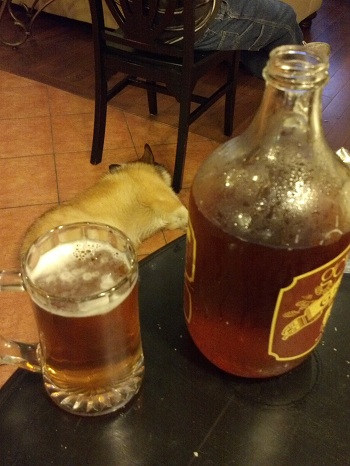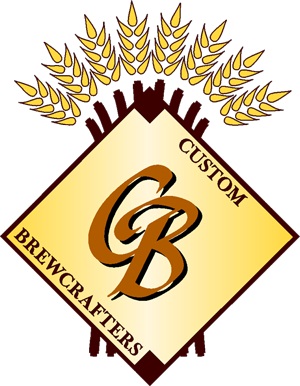Adding Little Hops To Your Steps

Brewery and Country of Origin: Custom Brewcrafters of 300 Village Square Boulevard, Honeoye Falls, NY, 14472, USA
Date Reviewed: 12-04-12
If you're new to the beer scene, you might be curious about what makes certain beers bitter. Well, let's take this opportunity to dive into the ins and outs of the beautiful Humulus Lupulus, otherwise known to you and us as Hops. First discovered as a useful crop for the art of brewing in 1079, the Hop is a widely produced component of temperate climate agriculture, with major producers being The United Kingdom, The United States, The Czech Republic, China, Poland, and of course Germany. Hop plants originated in China, where they moved mostly westward (though slightly east as well) toward Europe, where they were first cultivated in present-day Germany in 736. The hop plant is a fairly large climbing vine like plant which through careful growing, has been trained to climb up wire or string supports (which hang overhead) in order to maximize and even out sunlight exposure across the entire plant. The flowers (hops) are the component that is cultivated for the use of flavoring and stabilizing beer. In terms of the sensual aspects of a beer, hops are generally used to deliver two different, but related results: aromatic beers and bitter beers. The bitterness and aroma of a hopped beer will depend on the type of hops used, the amount of hops used, and the duration of the boiling step in the brewing process. The alpha acids account for the majority of bitter taste of a beer, while the beta acids contribute to a beer's hoppy aroma. During the boiling phase, the hops (which usually have already been dried in an oast house, though some wet-hop varieties of beer exist) are put in the boiler for an amount of time. The time depends on the style of beer being made, and the hoppy profile desired. To emphasize a hoppy taste, the aromatic hops are added during the final 30 or so minutes of a boil, while brewers wanting a more aromatic beer add the hops during the last ten or so minutes. Hops can also be added after boiling (known as dry hopping) to create a more hoppy character. Today, there are about 80 different varieties of hops, while a great amount more are in development by growers. Certain beer styles are going to demand more or less amounts of hoppy notes, and it is only desirable to have approprite levels for each style. For example, Pale Lagers do not use a lot of hops, as well as more malty beer like German Oktoberfests and Belgian wheats. In the case of IPAs, Bitters, and Pales, at least a good amount of hoppy flavor and aroma is required. Back in the middle ages, hops helped transform the brewing industry by allowing towns and villages to survive on low alcohol beer instead of water, which was often infested with bacteria which caused Cholera and Dysentery (this was also a problem on the Oregon Trail). The hops used to brew this medieval beer (and every other beer with hops) were favored due to their antibacterial properties which destroyed harmful parasites, while allowing yeast to ferment as it does. Hops also serve as a natural preservative, keeping hopped beer's shelf life higher than less hoppy beers. This was one of the many reasons why the India Pale Ale became a successful beer style during the age of the East India Company, whose shippers (along with their customers) demanded beer which wouldn't spoil on the long journey.a
Date Sampled: 11-22-12 At: 146 Fiddlers Hollow, Penfield, NY, 14526, USA
Beer Style: American IPA
Alcohol by Volume: 4.50%
Serving Type: Brewery Growler, 16 oz Mug Glass
Rating: 3.55
 Fresh Hops IPA
Fresh Hops IPA




